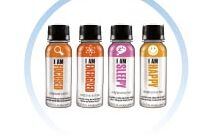In ‘Energy Drinks and Shots: Market Trends in the U.S’, market researcher Packaged Facts says US energy drink/shot usage rose from around 13% in 2006 to 17% in 2012, and predicts the market will be worth a whopping $21.5bn by 2017.
However, energy drinks and shots still account for just 3% of non-alcoholic beverage industry sales, while they have the lowest consumption rates of any RTD beverage, notes the report.
So how can manufacturers increase consumption among existing users and attract new consumers into the category?
An energy drink everyday?
First, get existing casual users to increase consumption, it suggests: “Focus marketing campaigns on everyday activity or time-based consumption. For example, marketers could suggest enjoying an energy drink in place of a morning cup of joe or pinpointing the “afternoon slump” as a key time for daily consumption
“Marketing campaigns could also focus on weekly rituals, such as sports games or weekend outings that could require an energy boost.”
Targeting boomers
Second, target new users beyond the core demographic of young men: “When looking at age by generation demographics, it’s clear that Boomer adults represent a growth opportunity.
“For example, consumer demographic profiles of 5-Hour Energy shots show a strong uptick in usage among older adults. Although the overall base of 45+ energy drink users remains small, elevated brand acceptance among older consumers reveals a market opportunity for 5-Hour Energy to target a more mature audience.”
(This explains why the brand began running full page ads in AARP Bulletin in 2011, it observes.)
Energy drinks as meal replacements?
Third, explore whether energy drinks - with the appropriate reformulation work - could work as meal replacements:
“Marketers could focus innovation on combining energy plus nutritional benefits, thus crossing over energy drinks into the meal replacement drink category as a logical next step in catering to the market’s convenience-minded, time-pressed user.”
Mixing energy with coffee, tea and sports nutrition
Fourth, target new users by cross-pollinating energy with RTD coffee, sports nutrition products or RTD teas, says Packaged Facts, citing products such as Red Bull Zero, Rockstar Recovery and Monster Rehab.
“Coffee-flavored energy drinks marked the initial move in blurring the lines between energy drinks and coffee drinks with products like Java Monster and Rockstar Roasted.

“Tapping into the popularity of sports drinks, energy drinks have begun to adopt similar functional properties. For example, Rockstar introduced the Recovery line extension, which expanded on the functional attributes of energy drinks to include hydration and recovery claims by including ingredients such as electrolytes.
“More recently, energy drink manufactures have taken note of the success in RTD tea and introduced tea-based energy drinks. Once again, leading players are at the forefront of this innovation.”
All-natural energy… ?

Fifth, explore more natural products that promise sustained energy and other health benefits, says Packaged Facts.
“More recently, industry players have begun to focus on delivering energy benefit with ingredients other than caffeine and sugar. This has created interest and category growth via product features, such as those with ‘zero’ monikers and ‘all-natural’ claims.
“The implication will produce continued growth among consumers looking for health benefits in convenient RTD beverages.”
Click here for more information.
